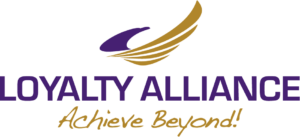How can a company get started on its Lean Journey? Fanfare and announcements? Quiet, stealth-like actions that just seem to happen under the radar? Structured information meetings with the various parties showing project plans and deadlines? Perhaps a mixture of all of these things.
The reality is that there is no single path to kicking off a Lean Journey. If your organization has been barraged with programs-of-the-month, positioning Lean as another program is bound to fall on deaf ears. If your organization is one that rallies around programs, then formalizing your Lean initiative through a grand kick-off may be exactly what is needed. If your employees feel that Lean is a way to downsize, then avoiding the term and providing results through actions is crucial.
The beauty of Lean is that it is flexible enough for every organization to take the ideas and craft a Journey map that works with their culture, their people, and their expectations.
Lean is a long-term way of running your business with small, incremental improvements at regular intervals in every corner of your organization. Starting small and growing organically works well for most organizations and key to deciding how to launch Lean is by understanding your organization’s culture and how your employees best respond to new ideas and changing their behaviors.
Looking at the different pieces of the puzzle that go into Lean, you might be telling yourself, “We do this, and we do that.” I’d be surprised if organizations didn’t. But how many of you said “We are this, and we are that. It is second nature to our staff.”? One of the principal mindsets of Lean is long-term improvements. We are never done and we can always improve. When we use phrases like “We do this” it subtly implies that we are finished with that piece and that there is no more improvement to be made. When we think in terms of “We are this” it brings us to the mindset that the pieces are more akin to skills that are woven into our DNA; Skills that we are always looking to improve, to hone, to refine, and to use repeatedly.
Top Five
For those of you that work from lists, I’d like to give you five focus points for starting your Lean Journey:
#1: Develop the Lean Mindset in Your Staff
Provide information sessions with your employees and talk about Lean principles. Should you use the word “Lean” or not – I leave that up to you. However, using layman’s terms to describe how the business should be run will provide a mindset education. Using terms such as: involving people in the change process, looking for incremental change that produces continual improvements all over the organization, replacing reactive activities with proactive strategies, eliminating waste, focusing 80% of the time on people issues, and having a passion for working smarter, not harder will seem like common sense to everybody in your organization.
While this is a first step and people might sit back and say “Well this is common sense.” The real chore is bringing these “common sense” ideas into everyday practice. They are common sense and simplistic in theory, but they are, oh, so complex in practice. What we lack most often is a process for bringing simple ideas into everyday practice.
Why don’t we make changes we know need to be made? We often hide behind “we don’t have the time,” but digging further we realize that it’s more like, “we don’t have the time because there is no process in place to help bring this intangible concept into the tangible work world and if I have to make something up I will need more time to invent it and I don’t know if it will get the results I need, so I think I’ll just learn to deal with the current state until somebody higher up tells me that it has to be changed or gives me the tool to use.”
But before we get into processes and methodologies (Part 3), you need to focus on getting your staff in the mindset and ready to work with common sense as a primary driving force.
#2: Build a Lean-Driven Leadership Team
For your management team, a different approach is needed. They need to have formal training on Lean, understand the power of Lean, go witness Lean results at other companies, and learn how to be the ultimate Lean Role Model for the organization. I use “learn” very deliberately here. Many company managers have years of habits that contradict Lean practices. These managers need to develop new skills and have time to practice them to the point of second nature and near-perfection.
Building a Lean-driven leadership team requires a plan. What checks and balances do you need to have in place to support the managers through this development process? What motivations are there? What additional training is needed? What goals do they have for themselves and how are they held accountable to meeting their personal development goals. It is so much more than simply telling the staff that they need to read up on Lean, believe it, and support it. They need to walk the walk and talk the talk.
#3: Listen to the People
It’s important to take time to listen to your employees. Listen to their challenges, concerns, and frustrations. You may have your own improvement ideas, but so do they. You’ll be surprised when you compare the lists.
At one company I worked with, the president thought the lack of robots on the lines was the most important issue to the employees. After interviewing the employees, I learned that one of their main issues was running out of a special glue on a sub-assembly line and not having a clear stock replenishment process, meaning certain job runs were getting interrupted while they scrambled to get glue. They really didn’t care about robots at that point in time.
#4: Create Small Successes
This follows closely to the example cited above. Many small successes (“singles” and “doubles”, if you are a baseball fan) in areas that are near and dear to the employees will gain attention, trust, commitment, and momentum for a company faster than trying to get “homeruns” that they feel are lower on the priority list.
It’s also important to tackle obvious or well known issues early on. If you try to sidestep existing issues and focus on your bigger and better ideas, employees may feel that you are not willing to correct today’s issues, only bury them and hope they go away.
#5: Provide Leadership and Support for Lean Activities
Once your leadership team is demonstrating their proficiency in Lean principles, begin building bridges down to the department employees. Create the process for the next layer to develop their mindset and skills. Start showing support for small improvement ideas and successes. Celebrate when employees find ways to implement small changes. Begin aligning people, processes, policies, actions, and planning around your common goals. In addition, start testing everything that is done in the organization against two simple questions: 1) “Is this helping us work smarter, not harder?” and 2) “Are we reducing waste?”
To recap:
Starting Lean: Top 5 Things to Do
#1: Develop the Lean Mindset in Your Staff
#2: Build a Lean-Driven Leadership Team
#3: Listen to the People
#4: Create Small Successes
#5: Provide Leadership and Support for Lean Activities
While every organization’s Journey will start in a unique fashion, and you may feel hesitant to start because there are many possible starting points, I urge you to take the time to develop a Lean understanding, develop leadership skills that support Lean, listen to the employees, and identify the issues that mean the most to your employees. As you work on these items, I’m sure your organization’s Lean Journey path will begin to show itself. And if you need help finding the path, ask for outside help. Sometimes a pair of outside eyes is necessary to help you step back and get a different perspective so you can move forward.
- Nurturing Innovation Through Psychological Safety: A Journey with Conversation Frameworks - July 26, 2024
- Unveiling Diversity in Problem-Solving: A DEI Perspective on Conversation Frameworks - July 11, 2024
- Bridging Gaps and Building Solutions: The Unfolded Story of Innovative Management Tools - June 17, 2024

